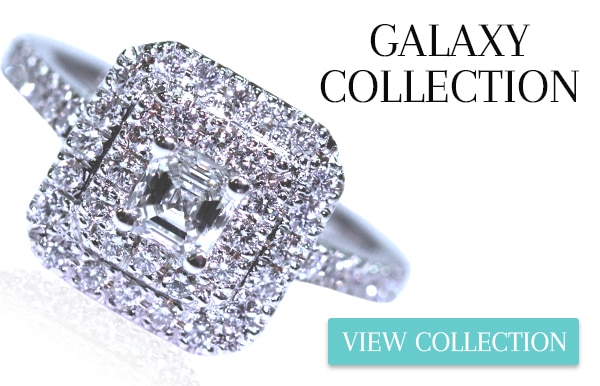There are so many diamond jewelries available on the market that choosing one for that special someone becomes a momentous decision, not only because of the commitment it symbolizes, but also you will likely wear it every day for the rest of your life
Finding the right one can seem like a daunting task, especially when we are in the jewelry store before the many models. Consider the following guide to help you choose the right diamond.
First of all, it is important to keep in mind that the quality and price of a diamond are determined by four conditions: cut, clarity, color, and carat. When selecting a diamond, we will look for one that balances these four qualities without pushing the budget to the limit. Perfect quality diamonds are rare and extremely expensive, but you can choose a slightly less than perfect diamond that will still look splendid.
Determine the cut and shape:
The most important quality characteristic of a diamond is cut, which affects the brilliance, fire and sparkle of the diamond. A beautifully finished diamond is dazzling, with all facets showing the skill and care of the craftsman. When a diamond interacts with light, it is reflected at each angle, returning a certain amount to the eye of the beholder. If the workmanship and the cut of the diamond are not good enough, the diamond will look lifeless and dull. With the brilliants of round diamonds, the cut is easy to manage because it's formally graded by an independent diamonds lab. For some diamond shapes, the cut is more subjective. For engagement rings, round brilliant diamonds with a very good cut grade are normally recommended, choosing a high cut grade maximizes the beauty of a diamond. Some tips regarding cutting:
If you're not sure which cut is best, choose a classic shape: round, sparkly, princess, and cushion cuts.
Consider a non-traditional form if the recipient has a non-traditional personality. Also note that less common shapes can cost up to 30% less for the same carat weight and quality: marquise, oval, pear, and heart cuts.
- Choose an ideal cut on a diamond for the highest level of perfection.
- Choose a “very good” or “excellent” diamond rating if you want a slightly less expensive diamond that is still of good quality.
- Consider a good rating if want to balance the other conditions while sticking onto your budget.
- Never buy a diamond with a reasonable to poor rating, especially for engagement rings and other gifts. Diamonds at these levels have a serious lack of luster.
Choose the color:
We can find diamonds in a wide variety of colors, some of them highly appreciated such as pink diamond, blue or even yellow. However, the less body color the part has, the more the true white, almost transparent color will be reflected, and therefore its value will be higher. Higher quality diamonds are colorless, as these are rare and reflect light better than stained diamonds. Mostly diamonds have slight yellow tones that are often impossible to see. That said, beauty only matters to the beholder (or a future fiancée), so colored diamonds shouldn't be discounted if they are to our liking.
The DZ scale is the industry standard for grading diamonds by color. Each letter represents a range of color based on hue and saturation. Colors are graded from D to Z, although a D, E, or F grade diamond is a rare thing to find. The human eye will only begin to detect color from grade J and beyond, so choosing a diamond grade between G and J will ensure that it appears colorless, while being easy enough to acquire. True diamonds in fancy colors (such as yellow, pink, and blue) are graded on a separate color scale.
Diamond clarity:
The clarity of a diamond essentially refers to the absence of inclusions or blemishes. Clarity is evaluated based on the number, size, nature, and position of these features. Fewer inclusions mean a purer diamond and therefore a higher quality.
Among some other things, imperfection includes scratches on the surface of the diamond. The inclusions are generally on the inside, and some can break the stone's surface. Sometimes small diamonds or other mineral crystals are trapped inside a diamond when it is formed. Depending on where diamonds are found, they can remain after the stone has been cut and polished, and it can affect their appearance.
The clarity characteristics of the diamond can have a negative influence on the value, but it can also have positive effects. On the one hand, they help gemologists separate diamond from imitations and can help identify individual stones, such as personality markings, since no two diamonds have exactly the same inclusions. They can provide scientists the information that is valuable enough to know how diamonds are formed.
To choose a piece as important as a diamond, you must take your time and consider all its qualities. At the end of the day, it will accompany you for life. At Leonards Jewellers, we are at your disposal to help you in this great task.

Comments
Post a Comment